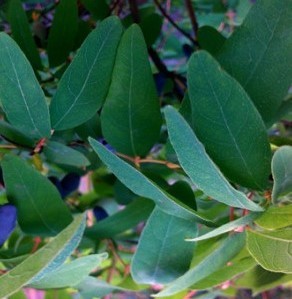Blue honeysuckle
(Lonicera caucasica orientalis)

Description
Lonicera caerulea, also known by its common names blue honeysuckle, sweetberry honeysuckle, fly honeysuckle (blue fly honeysuckle), blue-berried honeysuckle, or the honeyberry, is a non-climbing honeysuckle native throughout the cool temperate Northern Hemisphere in countries such as Canada, Japan, Russia, and Poland. The plant or its fruit has also come to be called haskap, derived from its name in the language of the native Ainu people of Hokkaido, Japan. Haskap is a deciduous shrub growing to 1.5–2 m (4 ft 11 in – 6 ft 7 in) tall. The leaves are opposite, oval, 3–8 cm (1.2–3.1 in) long and 1–3 cm (0.39–1.18 in) broad, greyish green, with a slightly waxy texture. The flowers are yellowish-white, 12–16 mm long, with five equal lobes; they are produced in pairs on the shoots. The fruit is an edible, blue berry, somewhat rectangular in shape weighing 1.3 to 2.2 grams (0.046 to 0.078 oz), and about 1 cm (0.39 in) in diameter.
Taxonomic tree:







